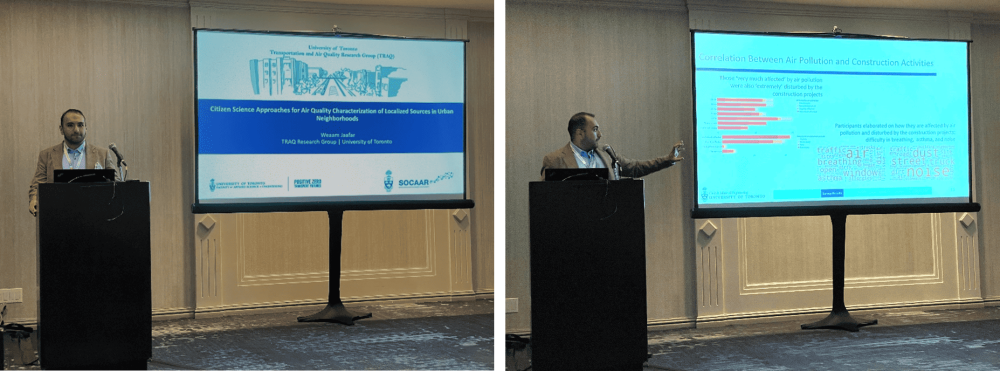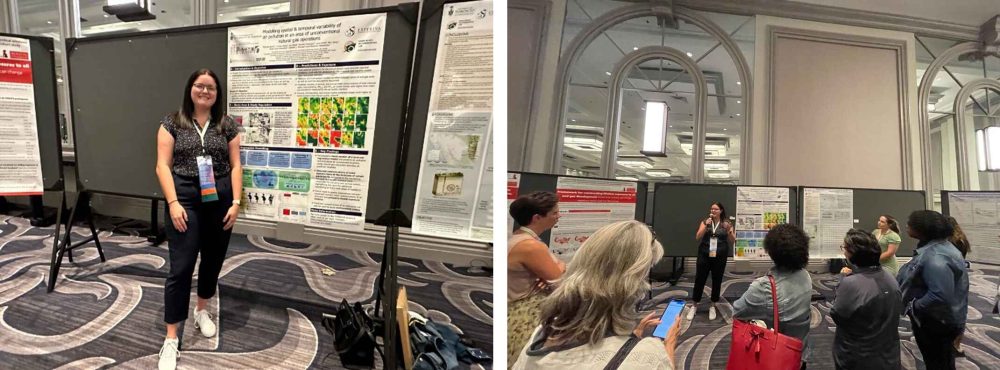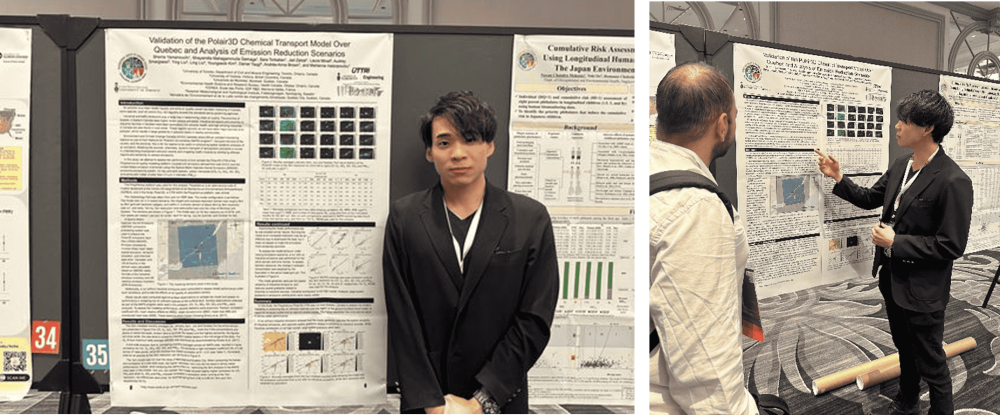Stories
International Society of Exposure Science (ISES) 2023:
“Connecting Communities & Science through Addressing
Environmental Exposures”
Chicago, USA
August 27-31, 2023

Multiple members from Positive Zero Transport Futures attended the International Society of Exposure Science Annual meeting in Chicago, Illinois, from August 27th – 31st. The theme of the conference, “Connecting Communities & Science through Addressing Environmental Exposures”, explored synergies between academia and communities in identifying, reducing, and improving exposures, with a primary focus on new and re-emerging environmental exposures.

Weaam Jafar, a PhD candidate, presented his work as part of the symposium “Providing Individuals and Communities with Air Pollution Data to Improve Health, Reduce Exposure, Modify Behaviors, or Increase Knowledge.” His presentation, entitled “Citizen Science Approaches for Air Quality Characterization of Localized Sources in Urban Neighborhoods” shared recent findings from fine particulate matter sensors installed by citizen scientists on balconies near dense construction activity in Toronto. Results showed higher PM2.5 concentrations near construction sites, and that survey respondents felt that their air quality was poor and attributed to construction activities and heavy traffic.

PhD candidate Jad Zalzal presented his poster “Integrating Multiple Data Sources to Generate an Emission Inventory for Residential Wood Burning in Quebec, Canada” in the symposium session “Machine Learning in Environmental Exposure Assessment.” This work aims to address gaps in emission inventories for residential wood burning using a novel approach that combines real estate data, socioeconomic, demographic and land use predictors from census data, and survey data. This inventory will be used as an input to a chemical transport model to study the impacts of residential wood burning on air pollution.
Jad Zalzal also presented his work “Downscaling CTMs with Mobile Air Quality Measurements and Machine Learning: An Investigation of the Impact of Different Vehicle Fleets on Environmental Justice” in the symposium session “Applications of Mobile Monitoring for Environmental Exposures – Design, Opportunities, Challenges and Future Directions.” This study used mobile air quality measurements and land use machine learning models to downscale 1km-resolution chemical transport model outputs to 100m-resolution outputs to better capture intra-urban variability of air pollution concentrations. The findings highlight the importance of high-spatial resolutions on urban air pollution for environmental justice and found that downscaling techniques using land use regression is an adequate approach.

Miranda Doris, a PhD student, presented her research in the facilitated poster session “Oil and Gas Development: Exposure, Health, and Justice.” Her poster, entitled “Modelling Spatial & Temporal Variability of Air Pollution in an Area of Unconventional Natural Gas Operations,” presented recent findings on the development of land use regression models to predict air pollutant concentrations at the homes of pregnant women living near hydraulic fracturing activities. Predictor variables for the regression models were developed using oil and gas production activities, including well operations, facilities, pipelines, road segments and annual emissions data. This work highlights the lack of monitoring of some hydraulic-fracturing air pollutants, including hydrocarbons, near areas of residence. These models will help investigate associations between prenatal exposure to air pollutants related to natural gas extraction and adverse health outcomes.

Shoma Yamanouchi, a Postdoctoral Fellow, presented his poster “Validation of the Polair3D Chemical Transport Model Over Quebec and Analysis of Emission Reduction Scenarios” in the symposium session “Environmental Exposure and Health from a Multi-Regional Perspective.” In this study, the model was validated against surface observations, and was used to analyze changes in population exposure as a result of scenarios affecting traffic and industrial emissions. This was the first dissemination of our team’s validation efforts for Polair3D in a Canadian context. The performance of the model was found to be in line with other models over Canada, and comparable to Polair3D’s performance over Europe.
The ISES 2023 Annual Meeting had the largest number of attendances yet, welcoming over 700 attendees from over 30 different countries. The five-day conference featured 64 different symposium sessions, nearly 350 talks, and 282 posters. Positive Zero Transport Futures is thankful for having such an engaging space to share recent findings of five different ongoing projects.